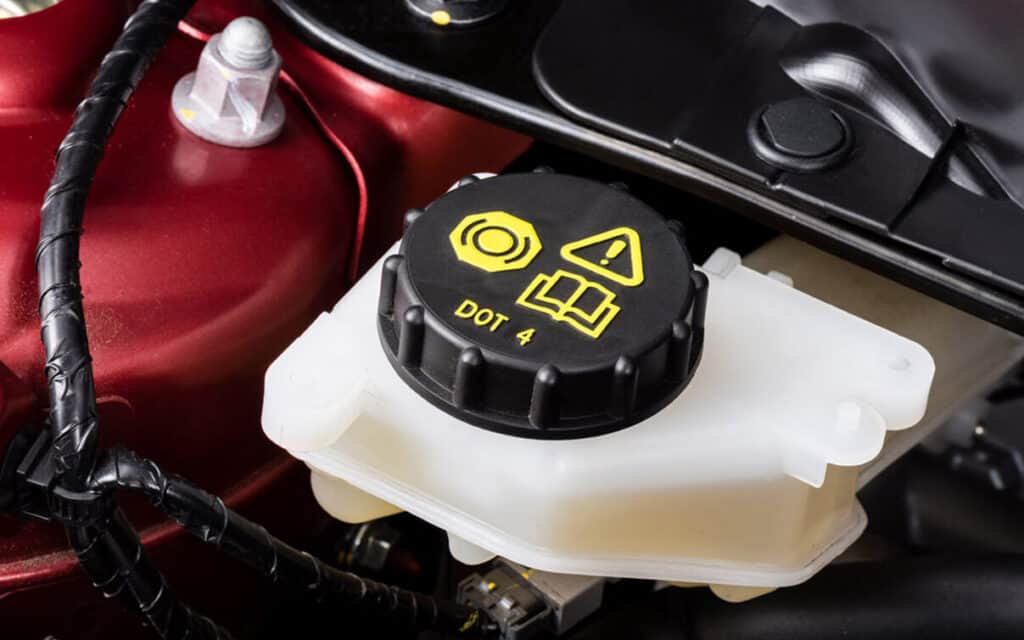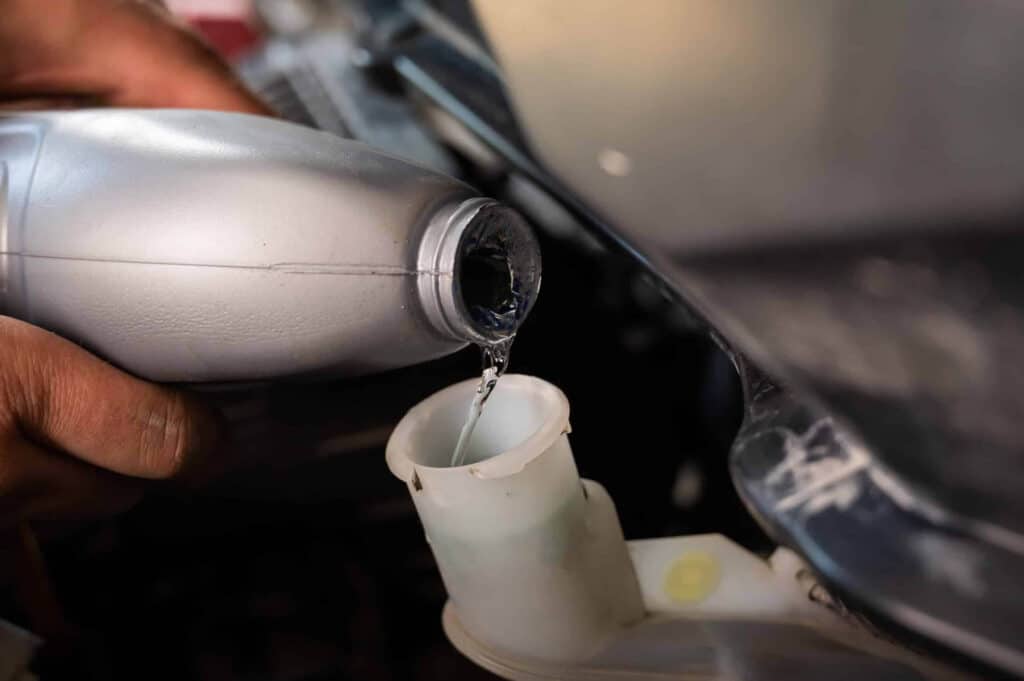The Importance of Uncontaminated Brake Fluid for Vehicle Safety
Maintaining clean and uncontaminated brake fluid is essential for ensuring the safety and optimal performance of your vehicle’s braking system. Contaminated brake fluid can cause a range of problems, from reduced braking efficiency to serious damage to your vehicle’s braking components. This article will explore the causes of brake fluid contamination, the impact it has on your braking system, and how to prevent and address this issue.
Understanding Brake Fluid: Its Role in the Braking System
Brake fluid is a hydraulic fluid that transfers the pressure from the brake pedal to the brake calipers, enabling the brake pads to clamp onto the rotors and slow down your vehicle. It is designed to have a high boiling point, low viscosity, and resistance to corrosion to ensure consistent and reliable braking performance under various conditions.

Causes of Brake Fluid Contamination
• Moisture Intrusion: Over time, moisture can seep into the brake fluid through brake hoses, seals, and even the master cylinder reservoir, leading to contamination.
• Debris and Particles: Wear and tear on braking components can cause small particles to enter the brake fluid, reducing its effectiveness.
• Mixing Different Types of Brake Fluid: Using incompatible brake fluid types can cause chemical reactions, leading to contamination and reduced performance.
• Chemical Contamination: Exposure to automotive chemicals or other contaminants can negatively affect the brake fluid’s properties.
The Impact of Contaminated Brake Fluid on Your Braking System
Contaminated brake fluid can have a significant impact on your vehicle’s braking system, leading to corrosion and damage to vital components. These components include calipers, brake lines, and master cylinders. When brake fluid is contaminated, it can compromise the integrity of these essential parts, causing them to wear out prematurely or even fail.
The presence of moisture in contaminated brake fluid lowers its boiling point. This reduction can lead to vaporization and brake fade under heavy braking conditions, which can be dangerous as it reduces the braking system’s effectiveness. Brake fade occurs when the fluid boils and creates vapor, which is compressible, leading to a soft or spongy brake pedal.
In addition to causing corrosion and brake fade, contaminated brake fluid negatively affects overall braking performance. When the fluid is contaminated, the hydraulic pressure transfer within the braking system is diminished. This reduction in pressure transfer results in decreased braking efficiency, longer stopping distances, and a potential increase in the risk of accidents.
How to Detect Brake Fluid Contamination
Detecting brake fluid contamination is essential for maintaining the safety and performance of your vehicle’s braking system. There are several methods to identify contamination, beginning with a visual inspection of the brake fluid. Check the color and clarity of the fluid in the master cylinder reservoir. If it appears discolored, cloudy, or has a milky appearance, it may indicate the presence of moisture, debris, or other contaminants. Additionally, look for any sediment or particles that may have accumulated at the bottom of the reservoir, as this can also be a sign of contamination.
Another way to detect brake fluid contamination is through specialized testing. Brake fluid test strips or electronic testers can be used to measure moisture content and contamination levels in the fluid. These tools provide a more accurate assessment of the fluid’s condition than a visual inspection alone. It’s also crucial to monitor your vehicle’s brake performance regularly. If you notice a decrease in braking efficiency, such as longer stopping distances, a spongy brake pedal, or a need for increased pedal pressure, these issues may signal contaminated brake fluid. By detecting contamination early, you can address the issue promptly and avoid potential damage to your braking system components.
Preventing Brake Fluid Contamination: Best Practices
• Regular Brake Fluid Changes: Follow the manufacturer’s recommended intervals for brake fluid replacement to maintain optimal performance.
• Using the Correct Brake Fluid Type: Always use the brake fluid type specified by your vehicle’s manufacturer to avoid compatibility issues.
• Proper Storage and Handling of Brake Fluid: Store brake fluid in a cool, dry place and keep containers sealed to prevent moisture absorption.
• Inspecting and Maintaining Brake System Components: Regularly check and replace worn or damaged components to minimize debris and particles entering the brake fluid.
How to Flush and Replace Contaminated Brake Fluid
If you suspect that your brake fluid is contaminated, it is crucial to address the issue by flushing and replacing the fluid. This process ensures that the old, contaminated fluid is removed from your braking system and replaced with new, uncontaminated fluid. By doing so, you can help maintain the safety and effectiveness of your vehicle’s braking system.
To perform a brake fluid flush, it’s recommended to consult your vehicle’s service manual for the specific steps and procedures, as they may vary between different makes and models. Alternatively, you can seek the guidance of a professional mechanic who can carry out the flush for you. This way, you can be confident that the process is done correctly and your braking system is in optimal condition.

Conclusion: Prioritize Brake Fluid Maintenance to Ensure Safe and Effective Braking
Maintaining clean and uncontaminated brake fluid is crucial for the safety and performance of your vehicle’s braking system. By understanding the causes of contamination and following best practices for brake fluid maintenance, you can avoid costly repairs and ensure a safe and responsive braking experience on the road.
